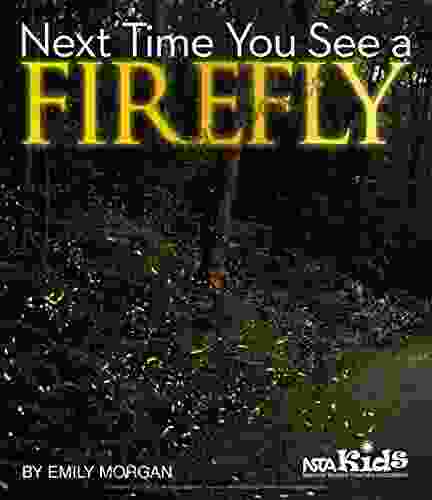The Next Time You See a Firefly: A Captivating Journey into the Realm of Bioluminescence

As the twilight descends, casting an ethereal glow upon the world, a mesmerizing spectacle unfolds in nature's canvas. Like tiny beacons of hope, fireflies dance through the darkness, illuminating the surroundings with their enchanting bioluminescence.
Unlocking the Enigma of Firefly Light
Fireflies, belonging to the order Coleoptera, possess the remarkable ability to produce light through a process called bioluminescence. This phenomenon arises from a unique chemical reaction occurring within specialized cells known as lantern cells. These lantern cells contain an enzyme called luciferase, which acts as a catalyst, triggering a cascade of chemical reactions that end with the emission of light.
4.8 out of 5
| Language | : | English |
| File size | : | 3195 KB |
| Screen Reader | : | Supported |
| Print length | : | 32 pages |
| Lending | : | Enabled |

The chemical reaction leading to firefly bioluminescence involves the oxidation of luciferin, a chemical substrate, in the presence of oxygen and ATP (adenosine triphosphate),an energy-carrying molecule. As luciferin is oxidized, it undergoes a transition to an excited state, and upon returning to its ground state, it releases energy in the form of photons, resulting in the emission of light.
The color of light emitted by fireflies is determined by the specific type of luciferin present in their lantern cells. Typically, fireflies exhibit a range of light colors, from faint yellow-green to vibrant orange-red.
Communication through Bioluminescence
Fireflies use their bioluminescence primarily for interspecific communication, particularly during mating rituals. The distinctive flashing patterns and light displays produced by different firefly species serve as unique signals that facilitate species recognition and courtship. Each species possesses a characteristic pattern of light emission, acting as a species-specific "language" that helps individuals identify potential mates.
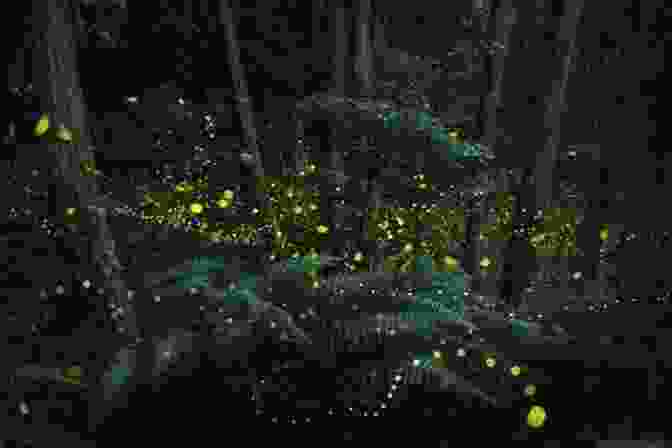
During mating season, male fireflies engage in synchronized light displays, flying in a coordinated manner and exhibiting specific light patterns to attract females. Females, in turn, respond to these displays by emitting their own light signals, indicating their receptivity and willingness to mate. This remarkable dance of light plays a crucial role in facilitating successful reproduction in fireflies.
Firefly Bioluminescence: Nature's Marvel
Firefly bioluminescence is not only fascinating but also serves essential ecological functions. For instance, some fireflies use their light displays to lure and capture prey, especially small insects. Additionally, bioluminescence in fireflies contributes to the pollination process by attracting night-flying pollinators, such as moths and bats, which assist in the fertilization of flowers.
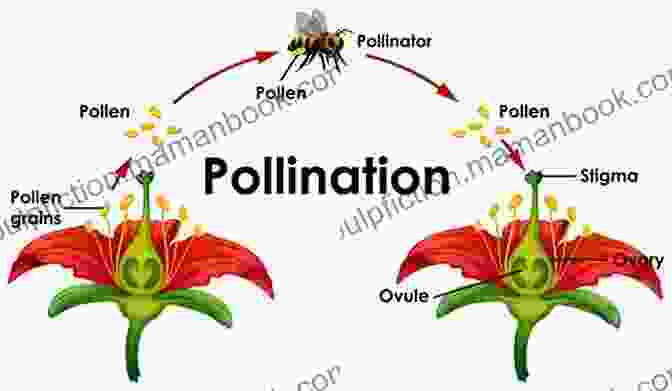
Fireflies have also played a significant role in human history. In Japan, for example, fireflies have been revered for centuries and are often associated with summer festivals and traditional folklore. Their light has been utilized for centuries as a source of illumination, particularly in rural areas where electricity was scarce.
Threats to Firefly Bioluminescence
While fireflies are captivating creatures, their populations are facing decline due to various threats, including habitat loss, pesticide use, and light pollution. Habitat loss occurs when natural areas where fireflies reside are converted to urban or agricultural land. Pesticides, commonly used in agriculture, can harm fireflies and disrupt their bioluminescent abilities.
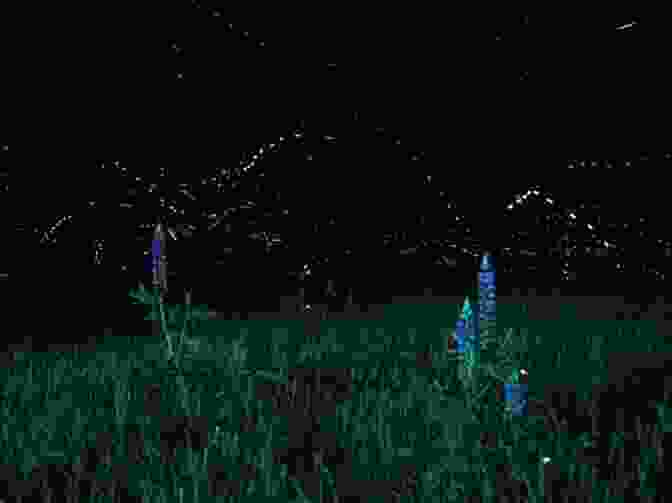
Light pollution, resulting from excessive use of artificial light, can interfere with firefly mating rituals. Artificial light sources can make it difficult for fireflies to distinguish between their species-specific light signals and the ambient light, hindering communication and reducing reproductive success.
Conserving Firefly Bioluminescence
Preserving firefly populations and their bioluminescence is crucial for maintaining biodiversity and ecosystem health. By implementing conservation efforts, we can protect these captivating creatures and ensure the continuation of their mesmerizing light displays in nature's tapestry.
One effective way to conserve fireflies is to protect their habitats. Establishing and maintaining natural areas, such as meadows, forests, and wetlands, provides suitable breeding grounds and shelter for fireflies. Minimizing pesticide use in these areas, particularly during firefly mating season, can also help preserve their populations.
Reducing light pollution is another essential step in protecting fireflies. Employing energy-efficient lighting fixtures, utilizing motion-activated lights, and shielding outdoor lighting downward can reduce the amount of artificial light emitted into the environment. These measures allow fireflies to communicate effectively and engage in their natural mating rituals, enhancing their chances of reproductive success.
The next time you see a firefly, take a moment to appreciate its enchanting light, a testament to the wonders of nature's bioluminescent artistry. By understanding the intricate biology behind firefly bioluminescence and the threats it faces, we can take proactive steps to conserve these fascinating creatures and ensure the continuation of their magical dance of light.
4.8 out of 5
| Language | : | English |
| File size | : | 3195 KB |
| Screen Reader | : | Supported |
| Print length | : | 32 pages |
| Lending | : | Enabled |
Do you want to contribute by writing guest posts on this blog?
Please contact us and send us a resume of previous articles that you have written.
 Top Book
Top Book Novel
Novel Fiction
Fiction Nonfiction
Nonfiction Literature
Literature Paperback
Paperback Hardcover
Hardcover E-book
E-book Audiobook
Audiobook Bestseller
Bestseller Classic
Classic Mystery
Mystery Thriller
Thriller Romance
Romance Fantasy
Fantasy Science Fiction
Science Fiction Biography
Biography Memoir
Memoir Autobiography
Autobiography Poetry
Poetry Drama
Drama Historical Fiction
Historical Fiction Self-help
Self-help Young Adult
Young Adult Childrens Books
Childrens Books Graphic Novel
Graphic Novel Anthology
Anthology Series
Series Encyclopedia
Encyclopedia Reference
Reference Guidebook
Guidebook Textbook
Textbook Workbook
Workbook Journal
Journal Diary
Diary Manuscript
Manuscript Folio
Folio Pulp Fiction
Pulp Fiction Short Stories
Short Stories Fairy Tales
Fairy Tales Fables
Fables Mythology
Mythology Philosophy
Philosophy Religion
Religion Spirituality
Spirituality Essays
Essays Critique
Critique Commentary
Commentary Glossary
Glossary Bibliography
Bibliography Index
Index Table of Contents
Table of Contents Preface
Preface Introduction
Introduction Foreword
Foreword Afterword
Afterword Appendices
Appendices Annotations
Annotations Footnotes
Footnotes Epilogue
Epilogue Prologue
Prologue D J Holmes
D J Holmes Mark Grabowski
Mark Grabowski Nathan Whitaker
Nathan Whitaker R L Smith
R L Smith Marie Greene
Marie Greene Herman Wouk
Herman Wouk Amber Ford
Amber Ford Brittany Anderson
Brittany Anderson Jude Stewart
Jude Stewart Scott D C Stern
Scott D C Stern Spike Walker
Spike Walker Ford Fry
Ford Fry Rosalind Bergemann
Rosalind Bergemann Vinoth Kubrick
Vinoth Kubrick La Moneda Publishing
La Moneda Publishing Richard Melton
Richard Melton Bryan A Garner
Bryan A Garner Humberto Tito Gutierrez
Humberto Tito Gutierrez Karen Mcquestion
Karen Mcquestion Erwin W Lutzer
Erwin W Lutzer
Light bulbAdvertise smarter! Our strategic ad space ensures maximum exposure. Reserve your spot today!
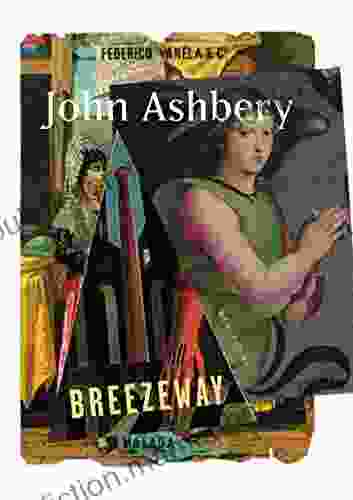
 Richard SimmonsBreezeway: New Poems by Keith Sullivan - A Poetic Journey of Loss, Grief, and...
Richard SimmonsBreezeway: New Poems by Keith Sullivan - A Poetic Journey of Loss, Grief, and... Fletcher MitchellFollow ·12.3k
Fletcher MitchellFollow ·12.3k Edward ReedFollow ·7k
Edward ReedFollow ·7k Alec HayesFollow ·9.5k
Alec HayesFollow ·9.5k Derek CookFollow ·2.8k
Derek CookFollow ·2.8k Dwight BlairFollow ·11.9k
Dwight BlairFollow ·11.9k Kendall WardFollow ·4.1k
Kendall WardFollow ·4.1k Jack LondonFollow ·2.7k
Jack LondonFollow ·2.7k Dean ButlerFollow ·2.6k
Dean ButlerFollow ·2.6k

 Joseph Conrad
Joseph ConradExport Now: Five Keys to Entering New Markets
Are you looking to expand your business into...
 Christopher Woods
Christopher WoodsElvis Presley: The King of Rock and Roll and an Icon of...
Elvis Presley was an...
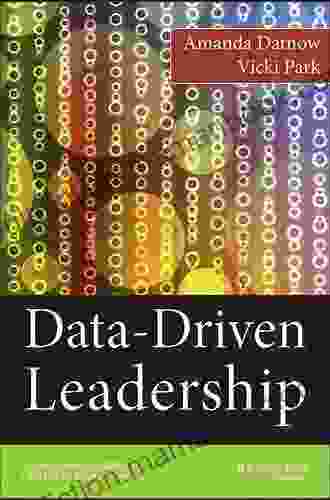
 Kelly Blair
Kelly BlairData-Driven Leadership: A Comprehensive Guide for...
In today's rapidly changing educational...

 Joe Simmons
Joe Simmons37 Stories of Canine Companionship and Courage
Dogs have been our...

 Martin Cox
Martin CoxChilling Psychological Thriller With Twist: Brace...
Prepare yourself for...
4.8 out of 5
| Language | : | English |
| File size | : | 3195 KB |
| Screen Reader | : | Supported |
| Print length | : | 32 pages |
| Lending | : | Enabled |


